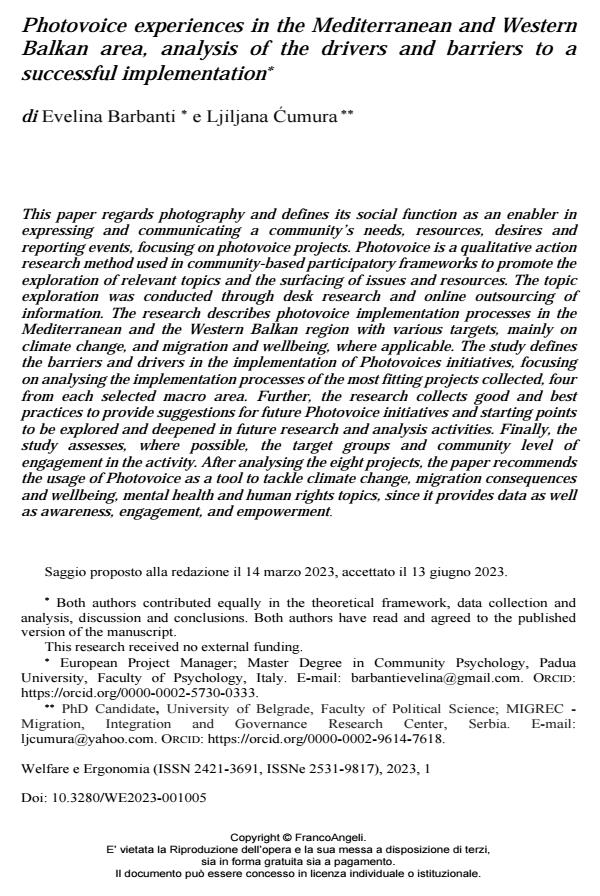Photovoice experiences in the Mediterranean and Western Balkan area, analysis of the drivers and barriers to a successful implementation
Journal title WELFARE E ERGONOMIA
Author/s Evelina Barbanti, Ljiljana Cumura
Publishing Year 2023 Issue 2023/1
Language English Pages 16 P. 59-74 File size 350 KB
DOI 10.3280/WE2023-001005
DOI is like a bar code for intellectual property: to have more infomation
click here
Below, you can see the article first page
If you want to buy this article in PDF format, you can do it, following the instructions to buy download credits

FrancoAngeli is member of Publishers International Linking Association, Inc (PILA), a not-for-profit association which run the CrossRef service enabling links to and from online scholarly content.
This paper regards photography and defines its social function as an enabler in expressing and communicating a community’s needs, resources, desires and reporting events, focusing on photovoice projects. Photovoice is a qualitative action research method used in community-based participatory frameworks to promote the exploration of relevant topics and the surfacing of issues and resources. The topic exploration was conducted through desk research and online outsourcing of information. The research describes photovoice implementation processes in the Mediterranean and the Western Balkan region with various targets, mainly on climate change, and migration and wellbeing, where applicable. The study defines the barriers and drivers in the implementation of Photovoices initiatives, focusing on analysing the implementation processes of the most fitting projects collected, four from each selected macro area. Further, the research collects good and best practices to provide suggestions for future Photovoice initiatives and starting points to be explored and deepened in future research and analysis activities. Finally, the study assesses, where possible, the target groups and community level of engagement in the activity. After analysing the eight projects, the paper recommends the usage of Photovoice as a tool to tackle climate change, migration consequences and wellbeing, mental health and human rights topics, since it provides data as well as awareness, engagement, and empowerment.
Keywords: Photovoice; Social impact; Photography; Community; Action research; Desk research.
Evelina Barbanti, Ljiljana Cumura, Photovoice experiences in the Mediterranean and Western Balkan area, analysis of the drivers and barriers to a successful implementation in "WELFARE E ERGONOMIA" 1/2023, pp 59-74, DOI: 10.3280/WE2023-001005